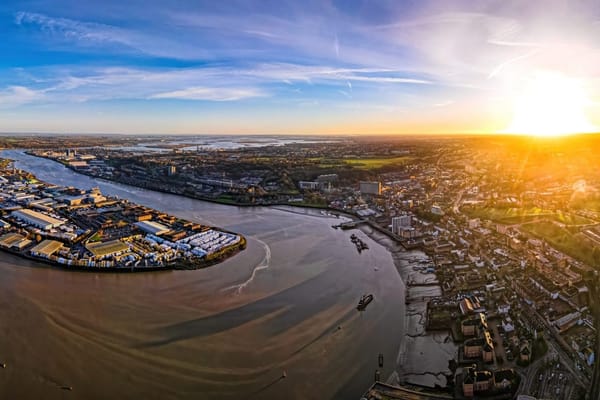Medway’s overlooked treasure trove of military history
Plus Glassbox lecture casts a spell, we review Piggyz, our weekly events guide, and more
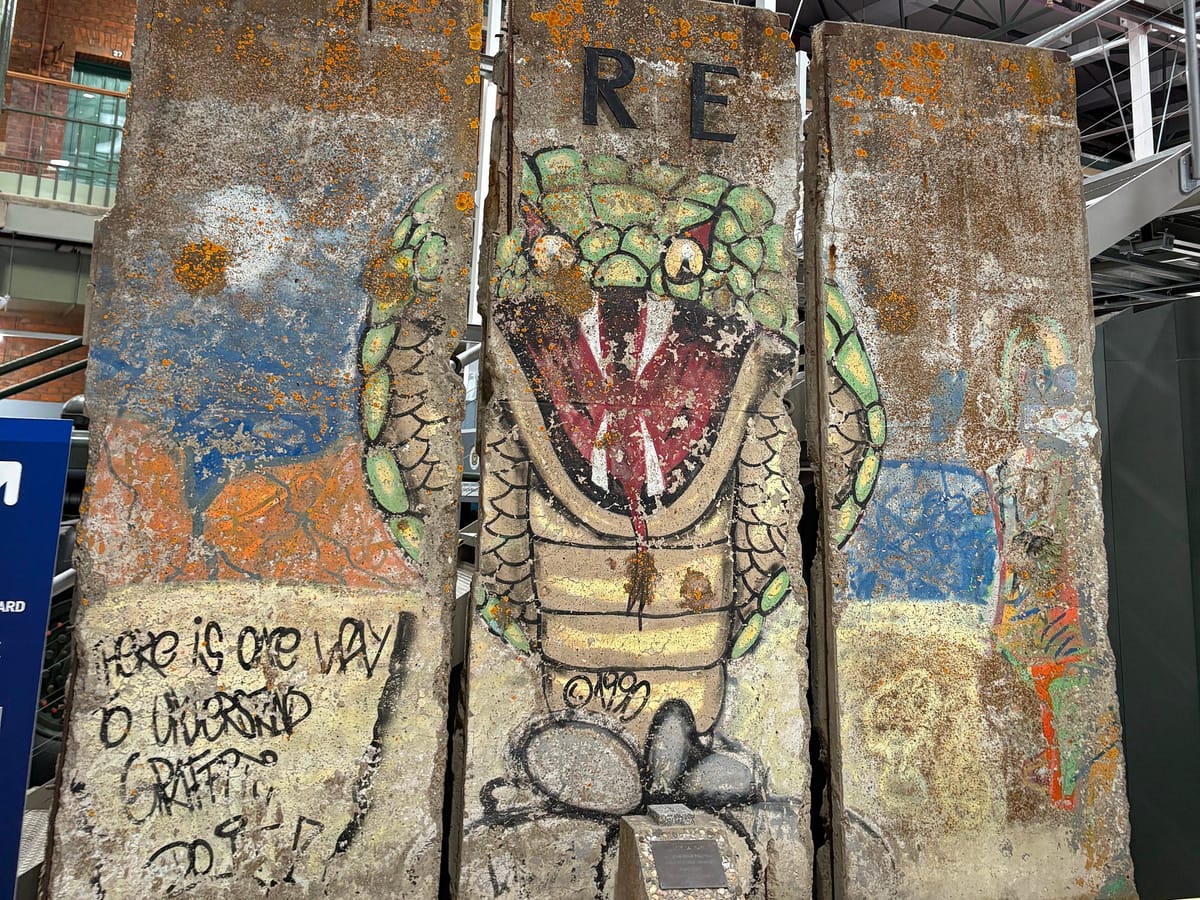
The Royal Engineers Museum is a remarkable collection of military items with exhibits from across the world. Somehow, the museum remains regularly overlooked, with many residents never having ventured inside. We sent Chris de Coulon-Berthoud to explore what it has to offer. Further down, we look at a recent lecture on witchcraft that drew a huge crowd, we review Piggyz, our weekly events guide, and more.
Medway’s overlooked collection of military history
The Royal Engineers have a long history in the Medway Towns. In 1812, Major Charles Pasley founded the School of Military Engineering at Brompton, when a library and archive were also established. The museum came later in 1875 with exhibits drawn from collections started by Major Pasley, and Sergeant Major James Forbes of the Royal Sappers and Miners depot in Woolwich. The current museum was opened in May 1987.
Medway’s long history as a naval and military centre has left the fabric of our streets run through with names that act as an oblique index of this country’s martial and imperial past. Names referring to places in what was the imperial periphery, like Afghan Street, Khartoum Road, and Natal Road, old pub names like The Ghuznee Fort, The Prince of Guinea, to the more obvious names like Ordnance Terrace and Sappers Walk. Chatham, perhaps noted for its forthrightness, chose an even blunter name: Military Road. There’s even a Stalin Avenue on the Wayfield estate, a pre-Cold War gesture to the summit at Yalta permanently etched into our local geography, but untroubling to the local postal service since nobody lives there.
It comes as a surprise then that the Royal Engineers Museum remains something of a hidden gem. The cheerfully enthusiastic Tom Paffett, who shows us around, tells us of a recent visitor who has lived in Chatham for 30 years, who told him that he never knew the museum was here. “I was like, ‘What did you think the blooming great armoured vehicles outside were for?’ He said, ‘Well, I thought it was just part of the barracks.’”
The cruelty of Empire lurks uncomfortably behind the stories the museum has to tell of gallantry medals, the evolution of military engineering, and personal tales of heroism and innovation, but they manage to navigate this with dignity. At the start of the exhibition is a magnificent painting of the colours of the Board of Ordnance from which the Royal Engineers emerged, depicting a pair of cyclops bearing hammer and tongues above the Latin motto ‘sua tela tonanti’ (‘To the warrior his arms.’)
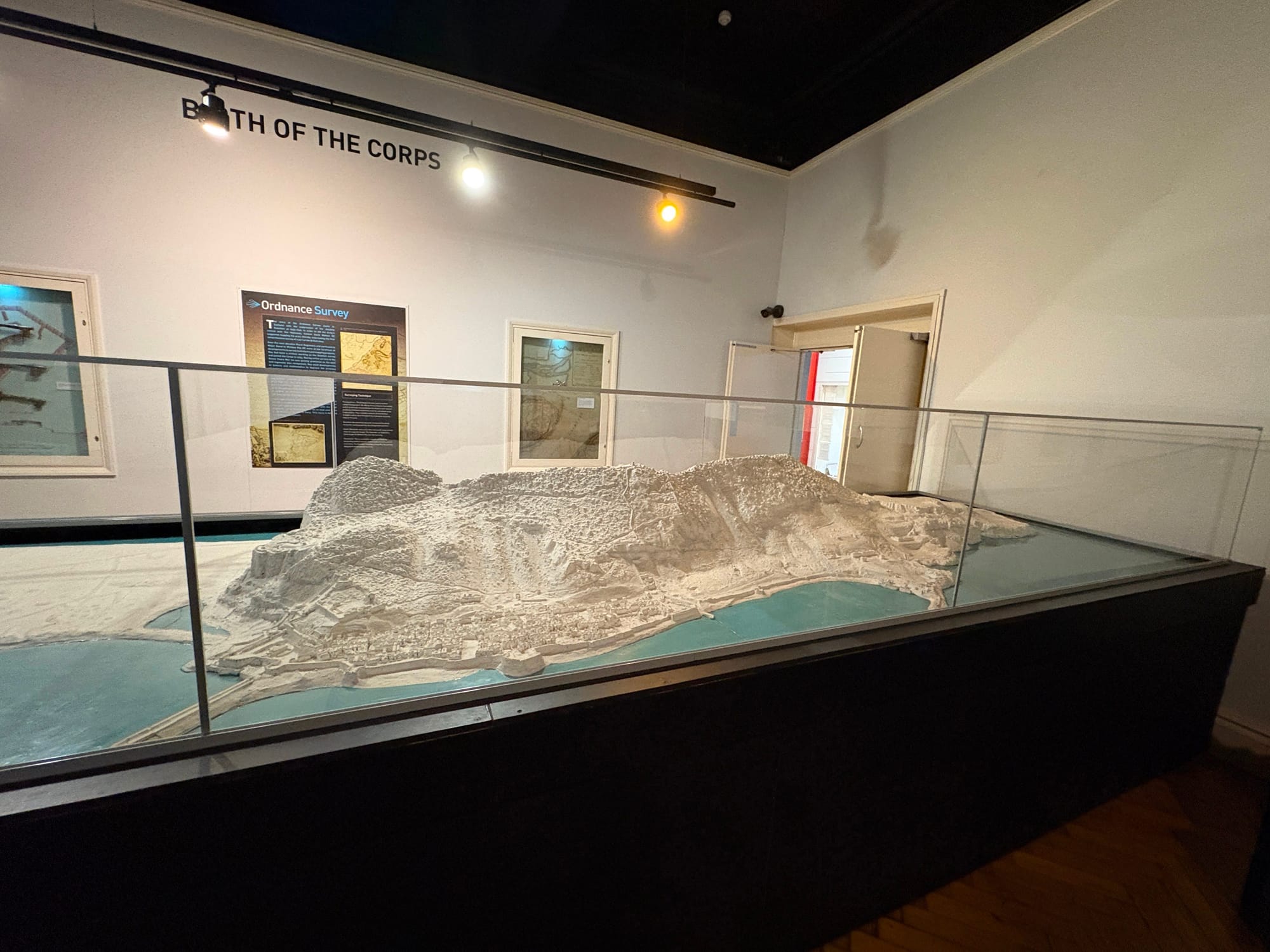
They watch over an enormous scale model of Gibraltar that represents the Siege of Gibraltar between 1779 and 1783, and a remarkable marble model of the King’s Bastion in Gibraltar, which once sat in Buckingham Palace. It was built in 1790 by Corporal John Brand, who served as a boy artificer during the siege, and it was presented to King George III in 1793. It’s popular with younger visitors, although Tom laughs as he tells us, “We quite often have to get a pair of tweezers out and pull out all the sweet wrappers stuck in there by the kids!”
Unsurprisingly for a military museum, there are some macabre exhibits. There’s a set of Waterloo teeth. Dentures were originally called Waterloos because expensive high-end dentures were made from teeth looted from the bodies of soldiers who fell at the Battle of Waterloo in 1815. Across the room is a lock of Emperor Napoleon’s hair removed after his death and given to Major (later to become Major-General) Anthony Emmett, who was the Royal Engineer Officer at St. Helena at the time. Elsewhere, you will find the stuffed remains of Snob, a captured Russian officer's dog who remained with the Corps during the Crimean War, gaining his new name because of his classist insistence on only eating in the Officers’ Mess. Snob’s mortal remains, except for his pelt, are buried on the edge of the parade ground at the Royal Engineers Barracks, several hundred yards away.
The Corps of Engineers has been almost everywhere around the world since its formation, which explains their motto ‘Ubique,’ meaning ‘Everywhere,’ reflecting the Corps’ presence in every major British Army battle and campaign, making individual battle honours unnecessary. Tom adds with a twinkle in his eye, “The Artillery have the same motto, but theirs means ‘All over the place.’”
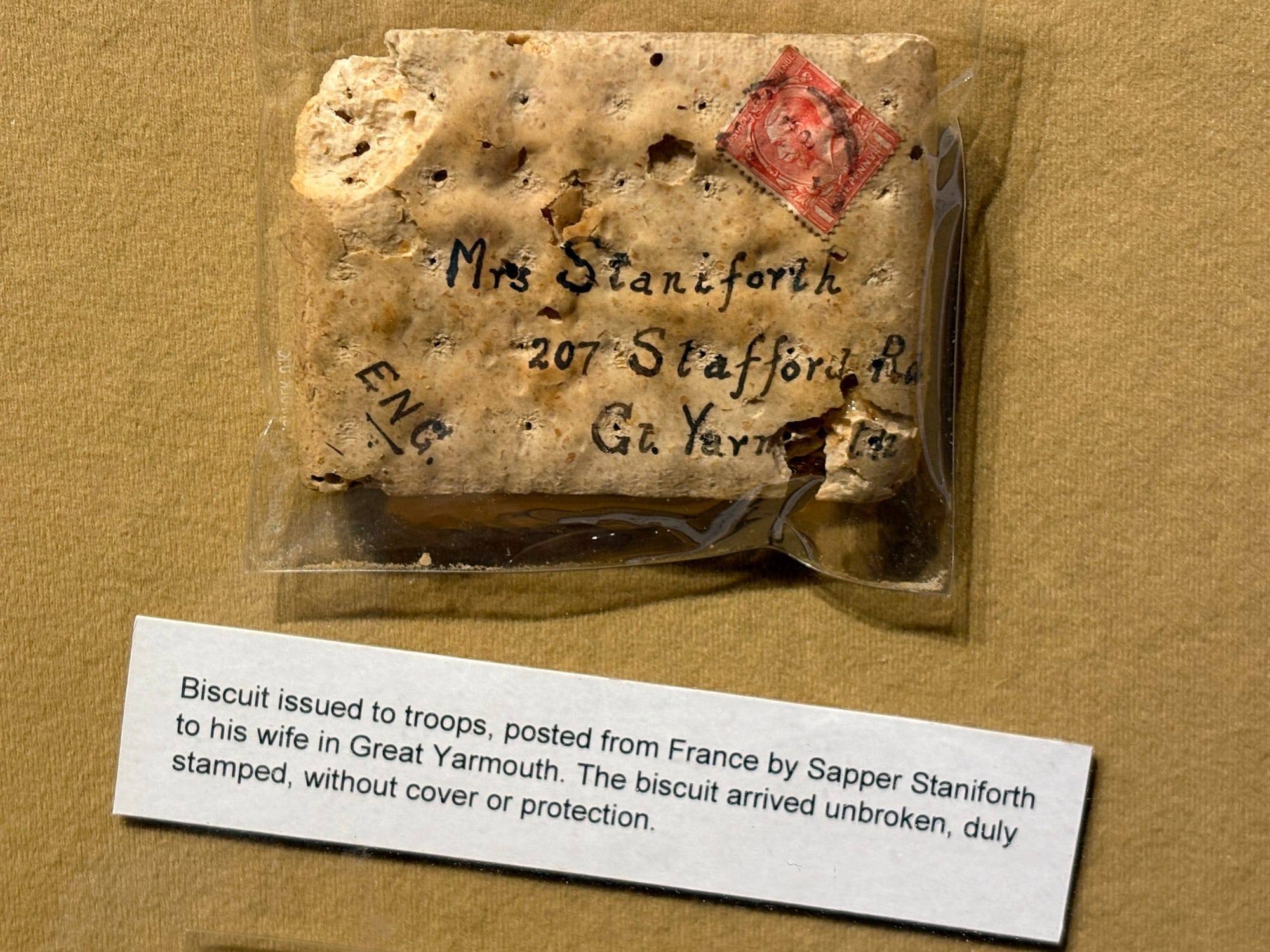
Tom explains that because of this presence across the world at various times, the collection is eclectic, from many sources, with some information about the material still coming to light. Research has discovered marks on several sets of arms and armour that were previously unnoticed, but thanks to advanced technology and a sharper understanding of what to look for, they are now visible. These marks reveal who made the pieces, which arsenal they came from, and other valuable information, all drawn from collections that have been held for decades.
The material exhibits collected from military actions all over the world tell a story of the breadth of our past imperial entanglements. The way we view our past role in the world is changing, too fast for some and too slowly for others, but British museums are actively reckoning with imperial legacies through recontextualising exhibitions, public engagement, repatriation efforts, digital innovation, and institutional reform. These initiatives reflect a growing understanding of how colonial histories shape both collections and public memory. The RE Museum is eagerly embracing this and reimagining how we can honestly represent the past in a way that doesn’t insult us in the present.
One example is the display of material from Sudan during the Mahdiyya (1885–1899), which saw the death of General Gordon. When General Kitchener defeated the Sudanese at Omdurman in 1898, he desecrated the Mahdi’s tomb, burning the remains and casting the ashes into the Nile, even keeping the skull for a drinking vessel or inkwell. Officers reportedly took fingernails as trophies, behaviour that horrified contemporary observers. The battle itself, fought with devastating dum-dum bullets, was described by eyewitnesses as “not a battle but an execution.” Even Winston Churchill condemned Kitchener’s conduct, and Queen Victoria forced him to apologise and rebury the skull. The museum joined the AHRC-funded project Making African Connections with the University of Sussex, working with Sudanese scholars to reinterpret these collections.
Not all Royal Engineers’ work was military. The Corps also undertook major civil engineering and infrastructure projects, from bridges and strategic railways to landmark buildings. Notable examples depicted include the Royal Albert Hall, designed by Captain Francis Fowke and Major-General Henry Y. D. Scott, and several prisons by Captain Joshua Jebb, including Pentonville, Broadmoor, and Dublin’s Mountjoy.
You can see the Webley revolver used in action by Lieutenant John Chard VC at the Battle of Rorke's Drift. And among the most fascinating pieces are early camouflage and deception devices, such as papier-mâché sniper targets and descriptions of painted trees designed to conceal troops. These ingenious objects show how the engineers pioneered decoys and concealment techniques that evolved into modern camouflage and even the first ghillie suits.
The museum also holds trench armour, helmets fitted with removable steel plates, and personal items that make the experience of the First World War gallery deeply human. Letters, drawings, and photographs connect the lives of individual soldiers to the broader story of industrial innovation. Other exhibits reflect the Engineers’ influence in the creation of new units too, postal services, catering, signals, the Royal Flying Corps, and later the Royal Electrical and Mechanical Engineers all grew out of their expertise. Innovation under pressure is a recurring theme. From bomb disposal and mine clearance to the development of Mulberry Harbours for D-Day, the Royal Engineers consistently found solutions to problems no one else could solve. The Corps’ legacy is visible not just in the machinery but in personal stories of gallantry, many preserved through medals, diaries, and oral histories.

The global reach of the Corps is reflected in objects as varied as samurai swords surrendered at the end of the Second World War, one of the few surviving V2 rockets, and even a section of the Berlin Wall. Each piece demonstrates that ‘Ubique,’ Everywhere, is not an empty motto, and the museum reflects the lives of the men and women whose ingenuity, sacrifice, and innovation made the Corps what it is. - Chris de Coulon-Berthoud
Glassbox lecture casts a spell
Gillingham’s Glassbox Theatre is hosting a series of affordable and accessible lectures from leading academics. The opening talk of the series was from Dr Laura Kounine, Assistant Professor of Early Modern History at the University of Sussex, on the theme of The History of Witchcraft and Women. The first remarkable thing about this evening is how well attended it is. The lecture hall is packed to capacity with 330 audience members, across a considerable age range, generating a palpable buzz of enthusiasm and anticipation amongst them in the bar and auditorium. Witchcraft, as Laura Kounine puts it, is having a moment, and tonight’s talk will prove illuminating as to the many reasons for this.
The first half of the talk is an illustrated chronology of the gendering of witches from the fifteenth to eighteenth centuries, the height of the witch trial craze in Europe and the New World. Most people, when asked to visualise or describe a witch, will think of a female figure, and Laura clearly outlines that this is misleading, as her research shows that of approximately 100,000 witch trials in the period, only around half resulted in executions and around a quarter of all the accused were male. A sequence of early modern sources follows, exemplifying how and why gendered perceptions of witches evolved. The audience is suitably outraged by the extracts from Heinrich Kramer’s Malleus Maleficarum, in which the monk’s preoccupation with female sexuality leads to outlandish accusations against women, but suitably amused by the accompanying manuscript illustration showing a nest of confiscated members in a tree pruned by a witch. A persuasive argument is made that fear or misunderstanding of the post-menopausal body coloured depictions of women as crones, fuelling suspicions that such women might be vengeful or wicked as they began to lose their role of producing children. Dr Kounine pitches her talk just right. The material is accessible for those with no prior knowledge, but contributions and interactions are welcomed from those who have it. A lively and clear communicator, Laura speaks with authority and obvious passion, but without veering into academic aridity. The pacing of the talk allows space to absorb and reflect on new information, but never flags, whilst the humorous elements don’t trivialise the subject matter.
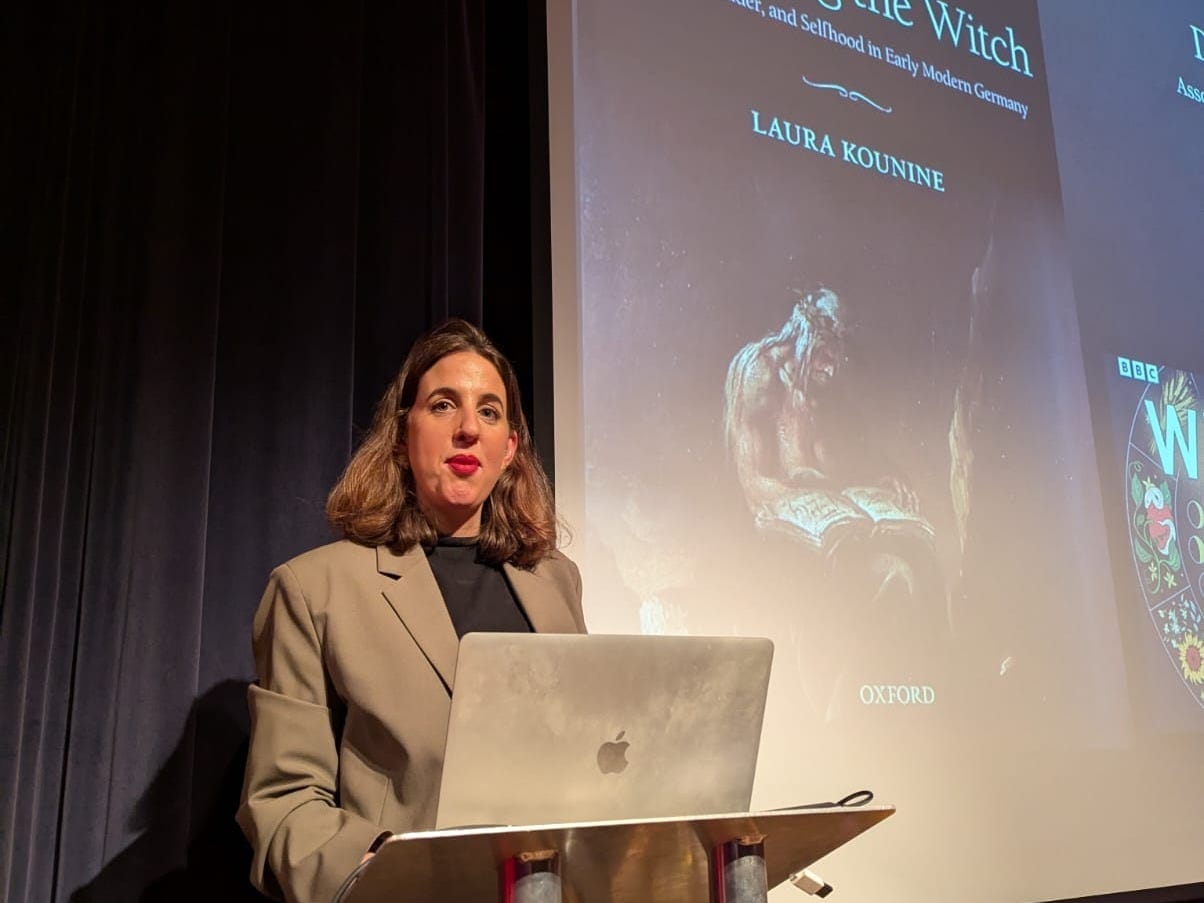
In the second half of the talk, the historiography of women and witchcraft is explored, and myths are debunked. Through this, and the audience Q&A, links are made to wider contemporary issues facing women, ranging from body autonomy and reproductive rights to the societal changes which have altered perceptions of witches today and, although not universally, led to wider acceptance of Wiccan practice and pagan worship. Even after the Q&A session has ended, audience members queue up to speak to Dr Kounine, who graciously and comprehensively answers individual queries. This level of audience engagement is seen extremely rarely these days and speaks of the fascination with the content and impeccable delivery of the lecture. - Moira Mehaffey
Out to Breakfast: Piggyz in Strood
I’m so old I get nostalgic for breakfast cafes. Back in the day, Piggy’s in Chatham was a great place to go for a full breakfast fry-up. Then the café, amongst other outlets, was heartlessly destroyed so that a decade later they could build.. checks notes.. flats. It is all well and good people having somewhere to live, but where are they meant to eat breakfast? Leave your answer in the comments.
Piggyz can be found in Strood. I don’t believe it has any connection to the OG Chatham Piggy’s, but it does feel comfortingly familiar. Within walking distance of parking, and near the station should you elect to travel there by train. The space is open and clean, with more seating than first appears.
Piggyz does offer an eating challenge. To be clear, this is not a review of that. You are welcome to go there, try it, and let us know how that goes for you. I went there for breakfast and ordered crispy bacon, fried eggs, fried bread, and a portion of mushrooms. Piggyz offers a make-your-own deal, so I end up with a sausage as well.

The food is clean and grease-free, with good crispy bacon, and crisp fried bread. One slice is slightly burnt, and the egg yolks are a little hard, but it tastes good and is enjoyed. It also comes with toast, which was a thick tiger bread and good quality, if a bit too much bread with the fried slices. The review would have been better if they hadn’t encouraged me to order the sausage, which did not taste good and was not enjoyed. As free sausages go, I overpaid. Which is a shame, because overall it was a good fried breakfast. Is it Chatham Piggy’s good? Let’s not get hyperbolic. - Steven Keevil
Events this week
🎶 Sat 27 Sep - All the Feels // Latest Mr Unswitchable’s themed open mic night, This time it’s songs with an emotion or feeling in the title! Rochester Social Club. Free.
🗺️ Sun 28 Sep - A Covenant with the River Medway // For World’s Rivers Day, artists Stephen Turner, Martin Booth and AD Taylor share their experiences from a recent trip on the water. Sun Pier House, Chatham. Free, booking essential.
🕰️ 30 Sep - 4 Oct - Time // Latest light show from Luxmuralis explores humanity’s relationship with the concept of time. Rochester Cathedral.
🧛 Thu 2 Oct - Radiohead X Nosferatu: Symphony of Horror // Pairing of silent film with music from Radiohead. Odeon, Chatham. Tickets £15.
More Authority
For our midweek feature, former civil servant Bob Collins analysed the aims of the current round of local government reorganisation, how things might play out, and the political games dictating who ends up where.
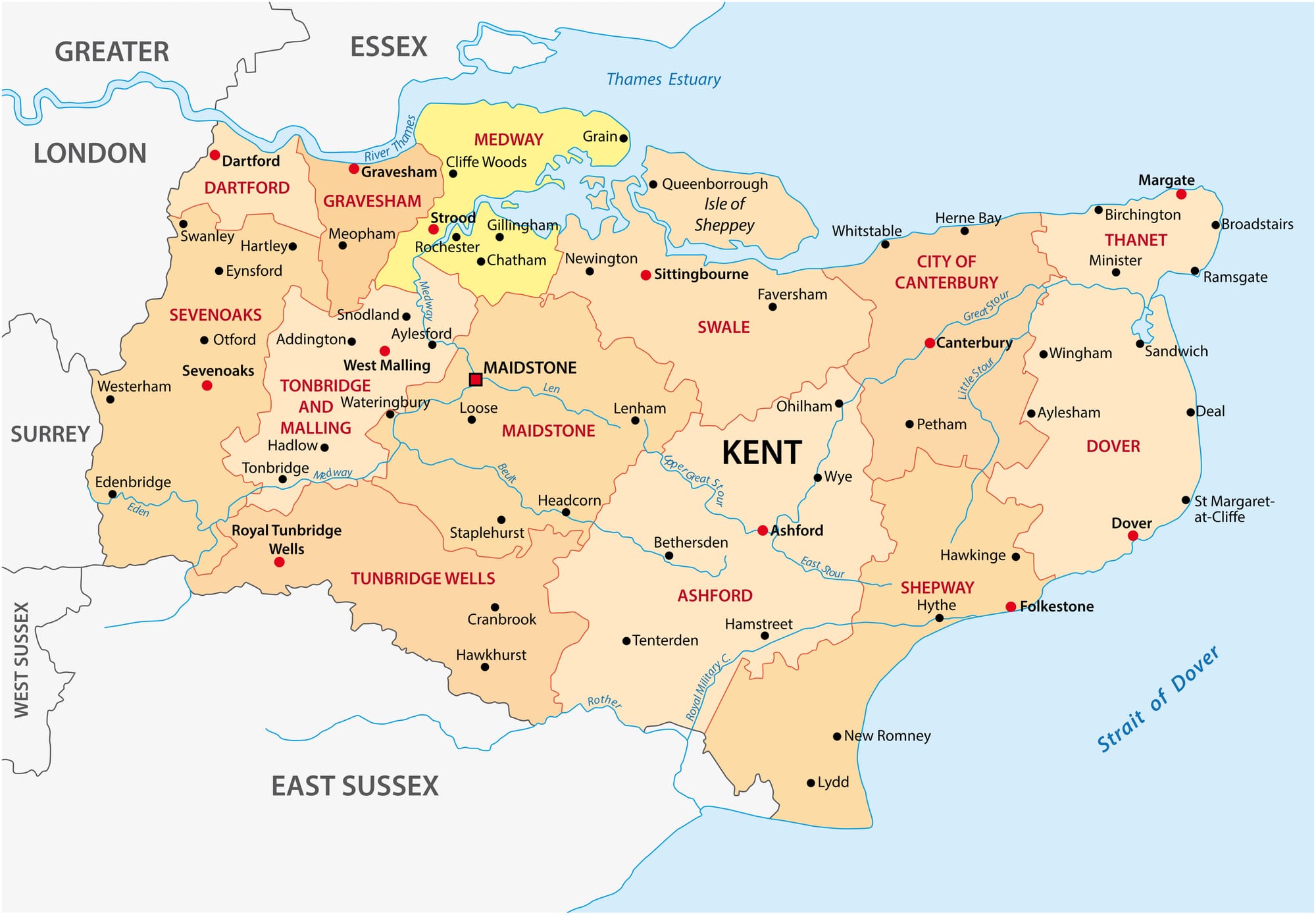
Footnotes
Follow us on social media! We’re on Facebook, Instagram, BlueSky, and Threads, but not that other one.
If you enjoy Local Authority, please share it with your friends, family, associates, and enemies. We have no meaningful marketing budget, so rely on word of mouth from our readers to find new readers. You can even get some sweet rewards for sending new readers our way. Details here.


